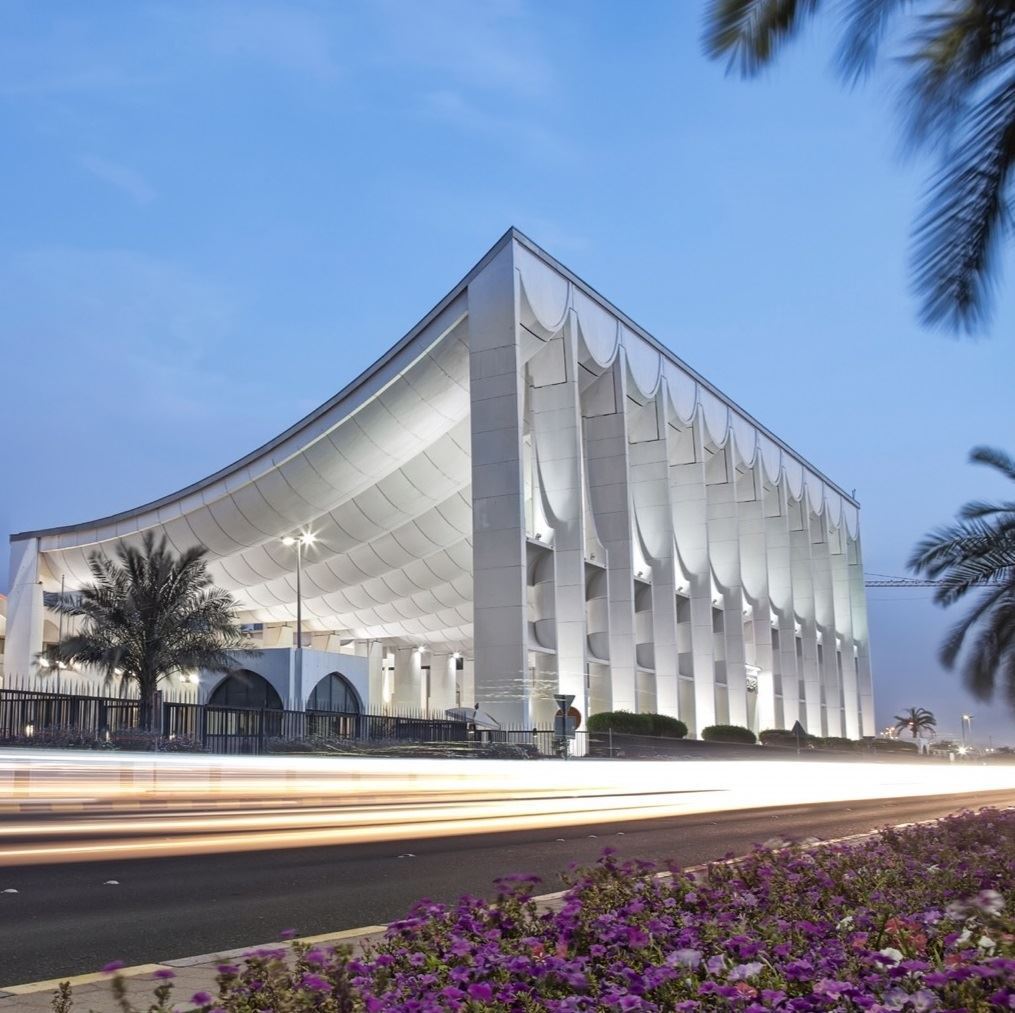This incredible white building houses the Kuwaiti parliament.
The building is an amazing combination of styles and draws its influence from both the modernist architectural movement and Islamic tradition.
For example, the sloping roofs serve both a functional and a figurative purpose.
They provide shade for the parking area on one side of the building and evoke the traditional Kuwaiti past by representing a traditional souk covered by a tent.
Although the style of the building is extremely contemporary, even 30 years after its completion, it still evokes Kuwait's rich cultural heritage whilst embracing modern building styles.

The project to build the National Assembly Building began in 1969 with an international competition which drew entries from many famous and successful architects.
The competition was eventually won by Jorn Utzon, the Danish Architect who designed the Sydney Opera House. Urtzon was eager to be involved in the project as it allowed him to combine his passion for Middle Eastern culture and tradition with his love of modernist architecture.
The dramatic front of the concrete building flows upward toward the sea, like a leaning canopy of sweeping fabric, shading what looks like a smaller structure underneath.
Skylights are repeated through the ceilings in the halls of the building. The large canopy, which covers the entire building below, also hovers above an open courtyard. The view from inside the Parliament is almost as striking as the outside.
The National Assembly Building has also become a symbol of political representation within Kuwait and an important icon for Kuwaiti citizens. The building houses Kuwait's National Assembly, otherwise known as the Majlis Al-Umma or House of the Nation. It is an especially important building as it houses Kuwait's parliament, the only parliament in the Gulf.
The building also houses the offices of Kuwait's leading politicians. Members of the public can even go to hear Parliament in session and translation is available for those who don't speak Arabic. These sessions are extremely interesting for anyone who wants to learn about the governmental processes of Kuwait, and reflect the open nature of Kuwait's legislative body.
Text Source: Over To You Student's Book
Photo Source: KUNA